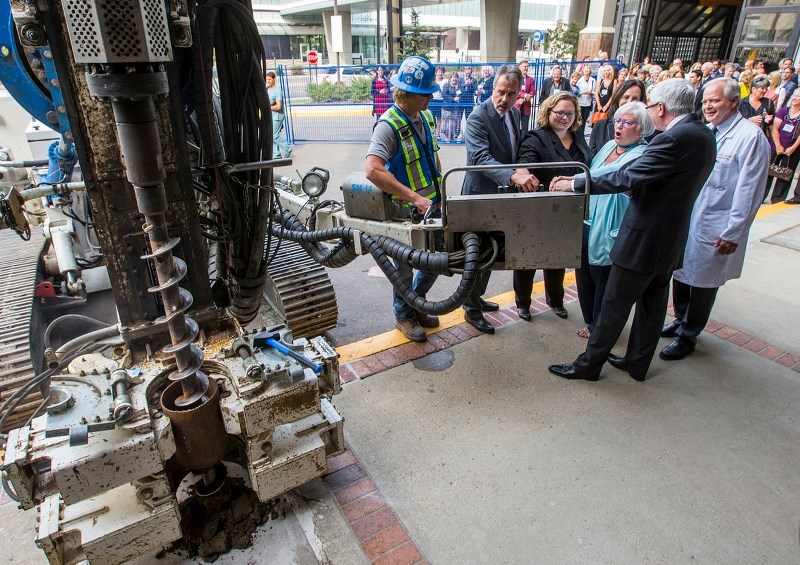Brad Freeman didn't know what was wrong with him back in 2010. All he knew was that he kept having seizures, drifting off in the middle of conversations for up to a minute at a time, unable to snap back to reality.
It was a bit of a relief that year to learn the cause, he said – he had a clump of tangled blood vessels called an arteriovenous malformation in his head that was pressing on his brain, causing seizures.
But it was also really scary.
"We didn't know what it was, we didn't know what could happen with it."
On top of that, he had a six-month-old son at home.
His doctor told him they could leave the clump alone and hope it didn't cause a stroke, crack open his skull and operate – complete with three months of recovery time – or use a high-tech, painless radiation beam to nuke it in 45 minutes.
"It was a no brainer," he said, to laughs from his audience.
Freeman, a businessman from Edmonton, spoke about his experience with the gamma knife at a press conference at the University of Alberta Hospital Thursday.
He and other dignitaries broke ground on a new $17.5-million Gamma Knife and Clinical 3T MRI Centre this week. Funded by the University Hospital Foundation, the new 432-square-metre centre next to the hospital's ambulance bay will house a high-resolution MRI scanner and Alberta's first gamma knife.
A gamma knife is a machine that blasts tumours using gamma radiation, said neurosurgeon Keith Aronyk, director of the U of A Hospital's neurosurgery department. It weighs about 20 tonnes, looks like an MRI machine, and can be used to treat tumours, malformations, and Parkinson's disease.
Patients treated with gamma knife radiosurgery are first imaged using a high-resolution 3T MRI machine like the one going into this facility. This scanner will be twice as powerful, four times faster and many times more precise than the ones currently used in Alberta, Aronyk said.
Next, they get wheeled into the gamma knife with their head strapped in place to get zapped.
Instead of using one massive beam – which would give a person bald spots – the gamma knife uses about 200 tiny ones positioned to all hit a specific spot in a person's head, Aronyk said. The individual beams are too weak to cause damage on their own, but when focused on one spot like a magnifying glass, they destroy cells. The machine is precise enough to target tumours a few millimetres in size and to reach tumours deep inside the brain.
"This is through the intact skull," he added. "We don't have to open the scalp."
That means no scalpels and no blood. Actual treatment time can be as little as 15 minutes – it was 45 for Freeman – with the patient back on his or her feet within 48 hours.
Right now, patients have to go to Winnipeg or the U.S. to make use of a gamma knife, Aronyk said. There's a lot of red tape involved, and some patients are too intimidated by the time commitment to make the trip.
Aronyk said having this device here means that he'll be able to send up to 350 patients to get gamma knife radiosurgery a year compared to the 10 he can do now with out-of-province facilities.
"It makes an enormous difference to have a gamma knife here in Edmonton."
The biggest thing about the gamma knife isn't what it does but what it doesn't do, Freeman said: it doesn't disrupt your life.
"I was in in the morning and out in the afternoon," Freeman said – the toughest part was just being away from his son for the weekend.
Crews start work on the new centre this September and should have it built by November 2017, said project manager Stefan Johnston. They'll have to drill about 280 pilings just to support the massive weight of the gamma knife.
Visit www.universityhospitalfoundation.ab.ca for more on the facility.




